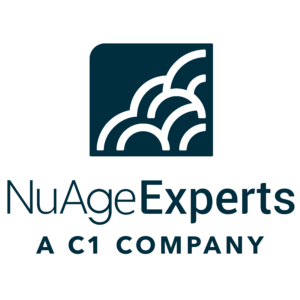Erin Haven, one of our Directors of Delivery here at NuAge Experts, is all about driving business value for our clients. At Dreamforce this year, she attended a session on building business value in IT projects, which in the current economic climate, is more important than ever to drive home the value of technology spend. Here’s some of her highlights from the session:
The First Rule: Focus on ROI
The session kicked off with a fundamental rule for IT projects: a relentless focus on Return on Investment (ROI). Speakers emphasized how ROI should serve as the Northstar for architects, directing every decision and action throughout the project journey.
Addressing the Three Dimensions
Architects, as the stewards of technology projects, must navigate three critical dimensions:
- Understand the Need: Why is the project a priority? Before delving into technical intricacies, first understand the problem you’re solving.
- Business Technical Capabilities: Efficiency gains, resource optimization, and scaling capabilities were highlighted as key components of business value. How will a project enhance the organization’s technical capabilities?
- Cost and Risk: Architects must continuously evaluate the project’s impact on costs and its ability to mitigate risks, like system reliability and regulatory compliance.

The session underscored three primary categories of business value:
- Efficiency: Business value can manifest through enhanced resource utilization, streamlined processes, reduced project timelines, and minimized post-implementation maintenance.
- Performance: Measure success against defined goals. Do your IT projects contribute to improved Customer Satisfaction (CSAT) or Net Promoter Score (NPS)? Have they or will they boost sales performance? Does it help the business scale better or faster?
- Risk and Compliance: Are projects improving data quality, addressing regulatory compliance, and/or shoring up system reliability?
Aligning Business Value and Business Requirements
The speakers distinguished between business value and business requirements, emphasizing that both must align seamlessly. Business Value is solution-agnostic, focused on the broader objective and clear on the value objective. Business Requirements are solution-dependent, detail-oriented aspects, specifying how goals will be achieved while retaining flexibility.
Five Ways Architects Drive Business Value
Architects are pretty critical to successful Salesforce and other IT projects. The session covered these five ways that an Architect can shepherd a project to success:
- Project Charter: This high-level document establishes project goals in clear business language, quantifying them for success metrics that are reviewed over the course of the project to keep it focused.
- Stakeholder Options: By presenting expected value, functional scope, and costs, architects empower stakeholders to choose solutions that align with their needs, fostering shared accountability and clarity of priorities.
- Planning to Measure: What specific metrics will assess project success? How are they reported on from the project’s inception through completion?
- Governance: Defining roles and responsibilities helps establish who views, maintains, and defines schedules. How often are success metrics measured through the project? Set a schedule!
- Prioritization and Roadmapping: Business and technology roadmaps help architects create a clear path towards delivering business value.
Benefits of a Value-Focused Approach
The session concluded by highlighting the benefits of adopting a value-focused approach:
- Focus on Real Objectives: By emphasizing the end goal rather than technology itself, stakeholders gain a clear understanding of why the project is essential. Audience alignment is crucial in aligning how we measure success.
- Continuous Improvement: Clarity about the value to be achieved facilitates a culture of continuous improvement, allowing consistent delivery of enhancements. Project milestones and quick wins will have a clear focus on the project charter to ensure the end result achieves our goal.
- Shared Accountability: Offering stakeholders options to chose how the solution will achieve their goals builds trust and fosters accountability, vital for change management success.
The panelists shared some awesome resources they use. Check them out!
- KPI Spreadsheet Template
- Salesforce Well Architected
- Architects Guide to Effective Roadmaps
- Outcomes Over Output
How you will get business value out of the Salesforce improvements you want to make? Reach out – we are happy to discuss ideas with you.


